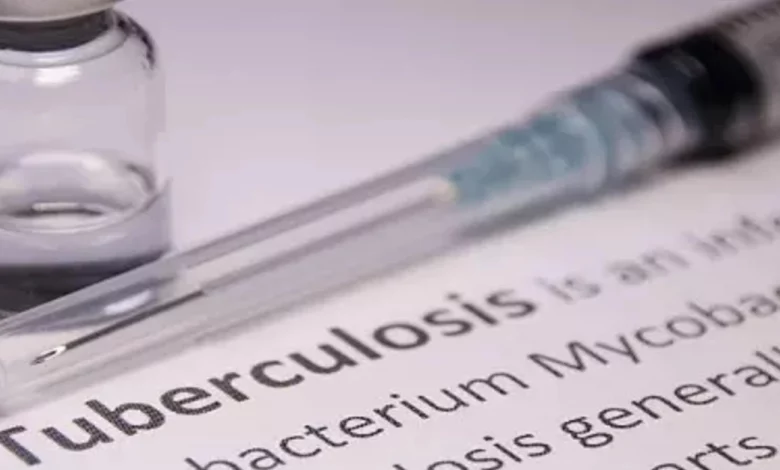
Context- Global progress towards the 50% reduction target of the WHO End TB Strategy by 2025 is still a long way off.
Key Highlights
- The WHO Global Tuberculosis Report 2023 provides a comprehensive and up-to-date assessment of the tuberculosis epidemic and progress in the prevention, diagnosis and treatment of the disease at global, regional and country levels.
- This is done within the framework of global TB commitments, strategies and goals.
- According to a WHO report, 7.5 million new cases of tuberculosis will be registered in 2022.
- Tuberculosis remains the world’s leading cause of death from a single infectious disease.
Key findings of the report
- Overall, 87 percent of the world’s TB cases in 2022 were in countries with 30 TB cases.
- The top eight heavyweight countries are Indonesia (10 percent), China (7.1 percent), the Philippines (7.0 percent), Pakistan (5.7 percent), Nigeria (4.5 percent), Bangladesh (3.6 percent) and the Democratic Republic of the Congo (3.0 percent ).
- India will have the highest number of TB cases in the world in 2022, accounting for 27 percent of the global burden.
- The report emphasizes that multidrug-resistant tuberculosis (MDR-TB) remains a public health crisis, with 1.1 million cases expected in India by 2022.
- India, Indonesia and the Philippines, which together accounted for more than 60 percent of the global TB reduction, the number of people newly diagnosed with TB in 2020 and 2021, all returning to pre-pandemic levels in 2022.
Challenges in controlling tuberculosis in India
- Malnutrition and poverty:
-
-
- Data from various agencies show that approximately 16.4 percent of India’s population lives in poverty and 4.2 percent in extreme poverty (deprivation score above 50 percent).
- Poverty is closely related to malnutrition and poor living conditions.
-
- Underreporting of tuberculosis cases:
-
-
- A significant challenge in India’s fight against TB is the underreporting of TB cases.
- Underreporting puts people at risk of infecting people who are still healthy.
- Unequal access to diagnosis and treatment:
- Ensuring equal access to quality diagnosis and treatment remains a major obstacle in the fight against tuberculosis.
- The private health sector, which forms a significant part of TB care, is fragmented and consists of a range of health providers who are often unregulated.
-
- Drug resistance in tuberculosis:
-
-
- Inconsistent adherence to standard TB treatment practices in the private sector has contributed to the emergence of drug-resistant strains.
-
- Problems of RNTCP (Revised National TB Control Programme):
-
- Weak implementation of the Revised National TB Control Program at the state level is a major problem hindering the effective management and control of TB.
- Social stigma and discrimination:
- Many TB patients hesitate to seek treatment or even deny their illness for fear of social discrimination and stigma.
Government initiatives
- Ni-kshay Poshan Yojana: It provides financial support to patients through direct benefit transfer.
- National Tuberculosis Eradication Programme: This aims to end the TB epidemic by 2025, five years ahead of the 2030 Sustainable Development Goals (SDGs).
- Pradhan Mantri TB Mukt Bharat Abhiyan: This is an initiative of the Ministry of Health and Family Welfare (MOHFW) to accelerate the country’s progress towards eradicating TB by 2025. It provides additional support to patients to improve treatment outcomes for TB patients .
- TB Mukt Gram Panchayat Abhiyaan: It plans to involve the community in achieving the goal of TB eradication. It provides TB Champions who are identified and TB susceptible at the Panchayat level. Inclusion of the Bacillus Calmette-Guérin (BCG) vaccine in the Indradhanush program.
- Two vaccines VPM (Vaccine Project Management) 1002 and MIP (Mycobacterium Indicus Pranii) have been developed and are in clinical trials.
Tuberculosis
- Tuberculosis is caused by a bacterium called Mycobacterium tuberculosis.
- In humans, tuberculosis most often affects the lungs (pulmonary tuberculosis), but it can also affect other organs (extrapulmonary tuberculosis).
- Tuberculosis spreads from one person to another through the air.
- Its most common symptoms are cough, sometimes with sputum and blood, chest pain, weakness, weight loss, fever and night sweats.
- Many new cases of TB are caused by five risk factors:
- Malnutrition
- HIV infection
- Alcohol use disorders
- Smoking
- Diabetes.
- Tuberculosis is preventable and curable, and approximately 85% of people who develop the disease can be successfully treated with 4/6 months of drug therapy.
- An additional benefit of the treatment also slows down the spread of the infection.
- Although tuberculosis is found throughout the world, 30 countries have the highest disease burden.
- World Tuberculosis Day is celebrated on March 24.
- The goal is to spread awareness of the devastating health, social and economic consequences of tuberculosis and to take action to end the tuberculosis epidemic worldwide.
- On that day, Dr. Robert Koch announced the discovery of the mycobacterium that causes tuberculosis, and his discovery opened the way for the diagnosis and treatment of this disease.
Source: The Hindu
Practice question:
Q. What does “Nikshay Mission” refer to?
- A space exploration program by a national space agency.
- A healthcare initiative aimed at eradicating a specific disease.
- An environmental conservation project for a river ecosystem.
- A cultural heritage preservation campaign in a country.





.png)



